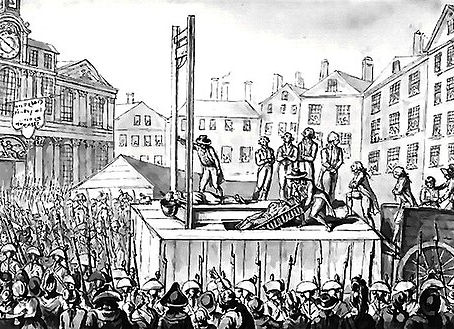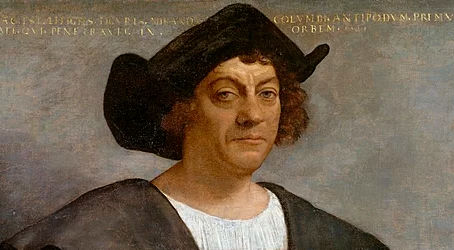top of page
All Posts


The Gunpowder Plot: The Explosive Story Behind Bonfire Night
In 1605, the Gunpowder Plot was foiled — a daring plan by Guy Fawkes and his fellow conspirators to blow up the Houses of Parliament and assassinate King James I. Their discovery sparked nationwide relief and celebrations that continue today as Guy Fawkes Day, with fireworks and bonfires marking the night England narrowly escaped disaster.
History Tidbits
Nov 53 min read


Ferdinand Magellan: The Man Who Proved the World Could Be Circled
Ferdinand Magellan set sail in 1519 to find a westward route to the Spice Islands and instead launched the first voyage around the world. Battling storms, mutiny, and starvation, his crew crossed the Pacific and proved the planet could be circled. Magellan himself never made it home—he was killed in the Philippines—but his daring plan reshaped global trade and forever changed how people saw the Earth.
History Tidbits
Sep 203 min read


The Remarkable Rise of the Přemyslid Dynasty
The Přemyslid dynasty rose from legend to power, beginning with a farmer-prince and the prophetess Libuše, who foretold Prague’s glory. From Duke Wenceslas—martyred and later canonized—to the daring raids of Bretislav I and the vast empire of Ottokar II, they turned a small Slavic duchy into a Central European force. Their glittering courts, dramatic assassinations, and lasting mark on Prague’s architecture keep their story alive long after their line ended in 1306.
History Tidbits
Sep 183 min read


The Reign of Terror: Fear, Power, and Revolution in France
During the French Revolution, the Reign of Terror (1793–1794) plunged France into chaos as fear, suspicion, and political purges ruled the nation. Thousands were executed by guillotine, including Marie Antoinette, while Robespierre’s grip on power tightened — until he, too, met the blade. A dark reminder of how revolutionary ideals can spiral into bloodshed.
History Tidbits
Sep 54 min read


Leonardo da Vinci: The Timeless Genius Behind the Mona Lisa
Leonardo da Vinci was a painter, inventor, scientist, and visionary whose genius shaped the Renaissance. From his revolutionary ideas to his masterpiece, the Mona Lisa, Leonardo’s endless curiosity continues to inspire more than 500 years later. Explore the man behind the art, the science, and the mystery.
History Tidbits
Aug 213 min read


Edward I: The Hammer of the Scots and the Lawmaker King
Edward I was born on June 17, 1239, the eldest son of King Henry III and Eleanor of Provence. His early years were marked by the turbulence of a kingdom still wrestling with the legacy of Magna Carta. Unlike his bookish father, Edward developed a love for war and governance, training as a knight and learning to lead men from a young age. These lessons in power and conflict would define his reign as one of England’s most formidable kings.
History Tidbits
Aug 194 min read


The Scandalous Life of Rodrigo Borgia, Pope Alexander VI: A Tale of Rise, Romance, and Ruthlessness
Rodrigo Borgia’s rise from a Spanish cardinal to Pope Alexander VI was a tale of ambition, desire, and power. His papacy shocked Christendom with open nepotism, notorious affairs, and political intrigue. From the scandalous Banquet of Chestnuts to the ruthless rise of his children, Alexander blurred the line between sacred duty and personal gain, leaving a legacy as one of history’s most infamous popes.
History Tidbits
Aug 113 min read


Elizabeth Báthory: The Bloody Countess of Hungary
Elizabeth Báthory, known as the “Blood Countess,” was a Hungarian noblewoman accused of torturing and killing hundreds of girls in the 1600s. Legends claim she bathed in their blood to stay young—but was she truly history’s most prolific female killer, or the victim of a conspiracy? Her chilling story blurs the line between fact and myth, leaving behind a legacy of horror and intrigue.
History Tidbits
Aug 73 min read


Henry I: The Forgotten Powerhouse King of England
Henry I wasn’t supposed to be king. As the youngest son of William the Conqueror, he was expected to pursue a life of learning—not power. But when opportunity knocked in 1100 after his brother’s sudden death, Henry seized the crown with remarkable speed. Known for his sharp mind and political skill, he issued reforms, defeated rivals, and ruled longer than any king since the Conquest.
History Tidbits
Aug 52 min read


Setting Sail into the Unknown: Christopher Columbus and His First Transatlantic Voyage
On August 3, 1492, Christopher Columbus set sail across the Atlantic on a voyage that would reshape the world. Backed by Spain, he sought a new route to Asia—but instead encountered the Americas. Discover the story behind his first transatlantic journey, the people he met, and the lasting impact of his fateful expedition.
History Tidbits
Aug 33 min read


The Tragic Reign of Richard II: A Cautionary Tale
Richard II, crowned at just ten years old, believed deeply in the divine right of kings. His dramatic reign was marked by rebellion, political intrigue, and a fateful clash with his cousin Henry Bolingbroke. Deposed and later immortalized by Shakespeare, Richard’s story is a powerful reminder of how fragile power can be—and how history remembers more than just victories.
History Tidbits
Jul 163 min read


Through the Looking Glass of Lewis Carroll: The Curious Mind Behind Wonderland
Lewis Carroll, born Charles Dodgson, was a mathematician, logician, and author best known for Alice’s Adventures in Wonderland. Blending logic with whimsy, Carroll created timeless tales that challenged Victorian norms and celebrated the absurd. His curious mind gave us more than stories—it offered a way to see the world through the looking glass of imagination.
History Tidbits
Jul 43 min read


Mary, Queen of Scots and the Casket Letters: Scandal, Power, and Betrayal
On June 20, 1567, a silver casket was opened—and with it, a royal scandal that would echo through history. The Casket Letters, allegedly written by Mary, Queen of Scots to her lover Bothwell, hinted at passion, betrayal, and murder. Were they authentic or a clever forgery to destroy her? Their discovery deepened the mystery surrounding Mary’s downfall and remains one of the most debated episodes in Tudor and Stuart history.
History Tidbits
Jun 205 min read


The Love Story Behind the Taj Mahal: Mumtaz Mahal and Shah Jahan
Mumtaz Mahal was the beloved wife of Mughal emperor Shah Jahan, and their deep bond inspired one of the world’s most iconic monuments—the Taj Mahal. After her death in 1631 during childbirth, a heartbroken Shah Jahan commissioned the magnificent white marble mausoleum to honour her memory. More than a stunning architectural feat, the Taj Mahal stands as a timeless tribute to love, loss, and the enduring legacy of a remarkable woman.
History Tidbits
Jun 173 min read


The Wedding That Changed a Kingdom: Henry VIII and Catherine of Aragon, June 11, 1509
On June 11, 1509, 17-year-old Henry VIII married Catherine of Aragon, the Spanish princess who had previously been wed to his late brother, Arthur. Their union began with promise—strengthening England’s alliance with Spain and uniting two respected royal houses. But years later, Catherine’s inability to produce a male heir and Henry’s desire for Anne Boleyn would turn this marriage into the catalyst for England’s break f
rom the Catholic Church.
History Tidbits
Jun 113 min read


The Tiananmen Square Protest: A Cry for Freedom that Echoes Still
In 1989, students gathered in Beijing’s Tiananmen Square to demand political reform, freedom of speech, and an end to government corruption. Their peaceful protest ended in a violent military crackdown, but the movement left a lasting mark on global history as a symbol of resistance and the fight for democracy.
History Tidbits
Jun 33 min read


May 15, 1885 – Louis Riel Surrenders
May 15, 1885, Louis Riel surrendered, ending the North-West Resistance. A champion of Métis rights, his fight for justice would lead to a controversial trial and execution—and a legacy that still shapes Canada today.
History Tidbits
May 152 min read


Cardinal Richelieu and the Invention of the Table Knife
On May 13, 1637, Cardinal Richelieu, the influential French statesman, invented the modern table knife. Prior to this, knives were primarily used for cutting large pieces of food. Richelieu's design featured a rounded tip, making it safer and more refined for dining. His innovation revolutionized eating etiquette, leaving a lasting legacy in the development of dining utensils. The table knife remains a fundamental part of every meal today.
History Tidbits
May 133 min read


The History of Mother’s Day: A Celebration Rooted in Tradition and Advocacy
Mother’s Day has roots in ancient celebrations of motherhood, but its modern form was popularized by Anna Jarvis in the early 20th century. After her mother’s death, Anna campaigned for a national holiday to honor mothers’ contributions. In 1914, President Wilson declared it a national holiday. Though the day became commercialized, it remains a time to celebrate and express gratitude for the love and sacrifices of mothers worldwide.
History Tidbits
May 113 min read


Catherine de Medici: The Mother Behind the Throne
Catherine de Medici, queen and mother of three French kings, ruled behind the scenes during one of France’s most turbulent eras. Fierce, strategic, and unwavering, she used diplomacy and power to protect her children and the Valois dynasty. Her legacy as a mother is one of resilience and political brilliance in the face of constant turmoil.
History Tidbits
May 113 min read
bottom of page